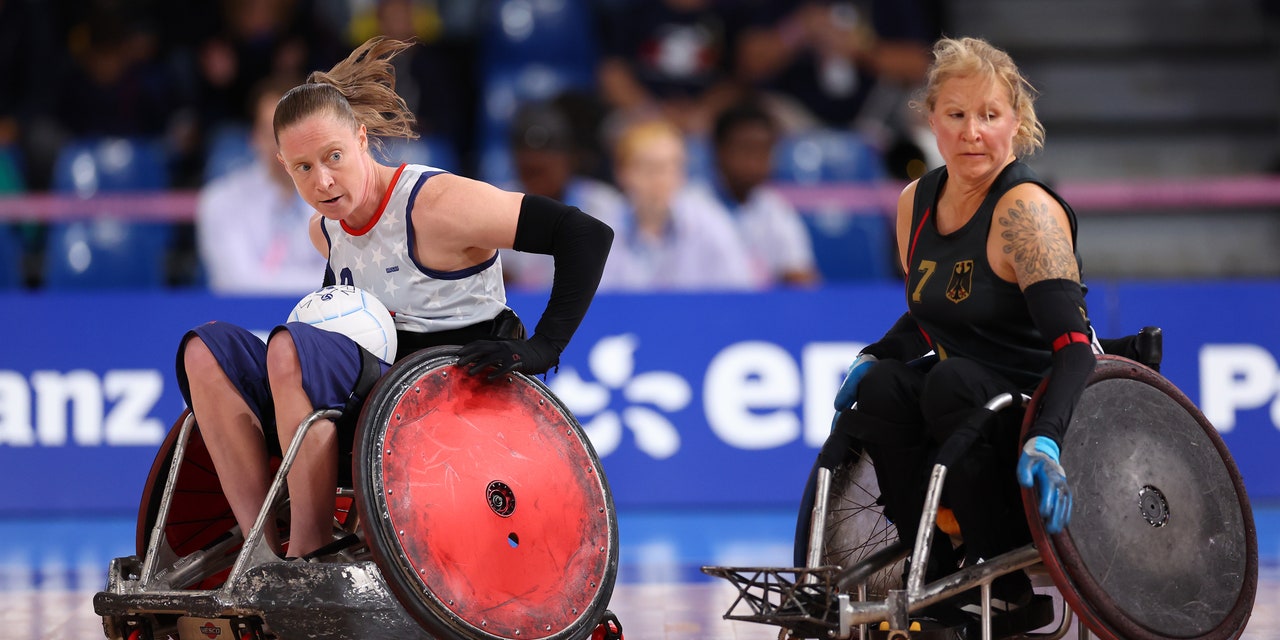The Number of Women Playing Wheelchair Rugby at the Paralympics Has Doubled Since Tokyo

On the first day of the 2024 Paralympic Games in Paris, Sarah Adam etched her name in the history books: She became the first American woman ever to score a goal in wheelchair rugby at the Paralympics. Adam ultimately put up six tries in 16 minutes on the court to help Team USA with a 51-48 victory against Canada in the group-stage game.
Beyond the score, Adam hoped her performance showed what women are capable of in a brutal sport (nicknamed murderball for its full-contact collisions) that’s been slow to welcome women into the fold. “There’s a place for us on that court,” she told AP News. “We need to have more females out there, and being seen, so that people know that this is an option for them.”
Adam, a professor of occupational therapy art who played softball as a grad student at Washington University in St. Louis before being diagnosed with multiple sclerosis in 2016, is one of several women from around the world who are blazing trails in a sport that’s mixed-gender but still very much male-dominated.
In total, eight women played across all of the wheelchair rugby teams in Paris, which doubled the number at the Tokyo Paralympics in 2021, according to Paralympic.org. This year, Adam became the first woman to play for Team USA. Australia has an unprecedented three women on its 12-person roster in Paris. Denmark, Germany, and Japan also have female players.
While more women are taking to the court, the 88 men in Paris still outnumbered the women 11 to 1, the AP reports, meaning there’s more work to be done to increase participation.
“It’s going too slowly,” Australia’s Ella Sabljak told AP News. “We’re definitely paving the way in Australia. Other teams definitely need to catch up, understand and recognize that women add value to the game. You know, we’re not burdens. We’re not different. We’re not difficult. We are, like, elite athletes amongst other elite athletes. And so I think people need to change their perspective on what women bring to the table.”
As a way to help boost inclusion, wheelchair rugby teams have incentives to include women: The rules of the sport reward teams for adding women to the roster. At the Paralympics, the sport classes athletes according to their physical abilities, with a score of 0.5 for the least able players, increasing by half-point increments to 3.5 for the most able. Teams of four can play with a max score of 8, according to the International Paralympic Committee. But each woman that’s brought onto the team gives the squad an extra half point, a rule that helps “level the playing field,” as Adam told AP News.
It also encourages teams to recruit and develop female players, Andrea Bundon, who studies female participation in Paralympic sports at the University of British Columbia, told AP News. “There is value in having the women and men compete together—they can appreciate each other’s athleticism and see that women are capable of competing at that level,” Bundon said.





